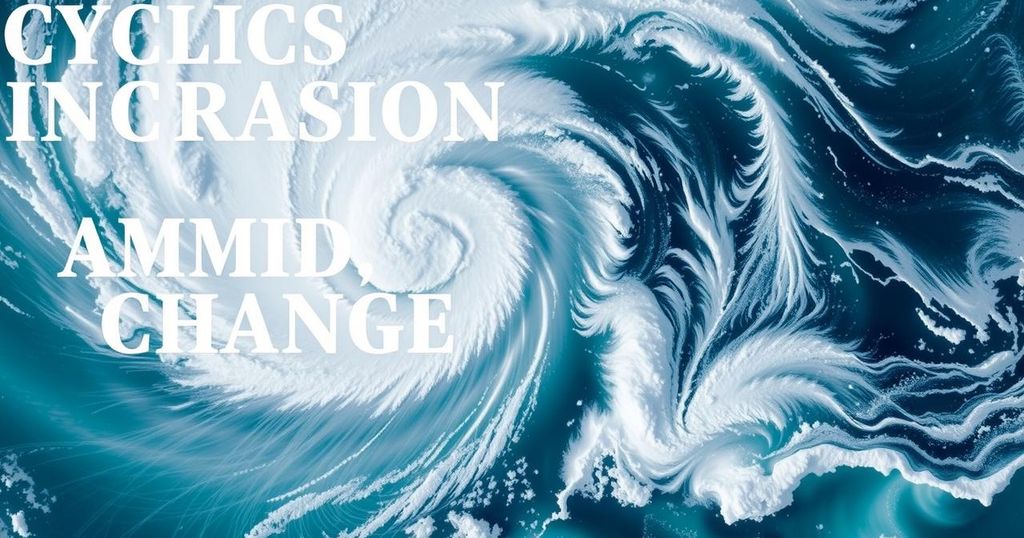Tropical Cyclones: Steady Frequency but Increasing Intensity Due to Climate Change
Research reveals that while the annual frequency of tropical cyclones has remained steady at about 47 since 1980, their intensity has increased significantly, with maximum wind speeds rising from an average of 182 kph to 192 kph. The occurrence of category five cyclones has risen by 40 percent in the past decade, as reported by climatologists linked to the IPCC, underscoring the impact of climate change on cyclone behavior.
The incidence of tropical cyclones, commonly referred to as hurricanes and typhoons, has remained consistent over the past forty years, with an average of approximately 47 occurring yearly since 1980, according to global data from the United States National Oceanic and Atmospheric Administration (NOAA), endorsed by the World Meteorological Organization (WMO). However, data reveals a troubling trend: the intensity of these cyclones has escalated markedly. Comparisons indicate an increase in average maximum wind speeds from 182 kilometers per hour (kph) to 192 kph, signifying a 5 percent rise. Notably, the proportion of cyclones exceeding wind speeds of 250 kph has surged from one in ten to 1.4 in ten in the latest decade, reflecting a significant 40 percent increase in category five storms on the Saffir-Simpson scale. These developments underscore concerns raised by the United Nations’ Intergovernmental Panel on Climate Change (IPCC), which forewarns that climate change is likely to exacerbate the severity and frequency of destructive cyclones, particularly those classified as category four and five.
In analyzing the trends of tropical cyclones, it is critical to understand the underlying climatological shifts influenced by human-induced climate change. Since the onset of comprehensive cyclone tracking, data has indicated a steady frequency in cyclone formation, yet a distinct rise in their destructive capacity has emerged in recent years. The implications of such trends are profound, impacting vulnerable populations and increasing the humanitarian challenges associated with extreme weather events. Climatologists and international bodies are increasingly linking these phenomena to climate change, calling for urgent attention to the threats posed by intensifying storms and the socio-economic factors that amplify their impact.
In summary, while the annual occurrence of tropical cyclones has not surged, the escalated intensity of such storms presents a significant concern in the context of climate change. The increased wind speeds and the growing number of severe category five cyclones highlight an alarming trend that aligns with predictions from major climate authorities. This situation necessitates a robust response to mitigate the consequences faced by vulnerable populations and adapt to the challenges posed by increasingly powerful cyclones.
Original Source: www.rfi.fr




Post Comment